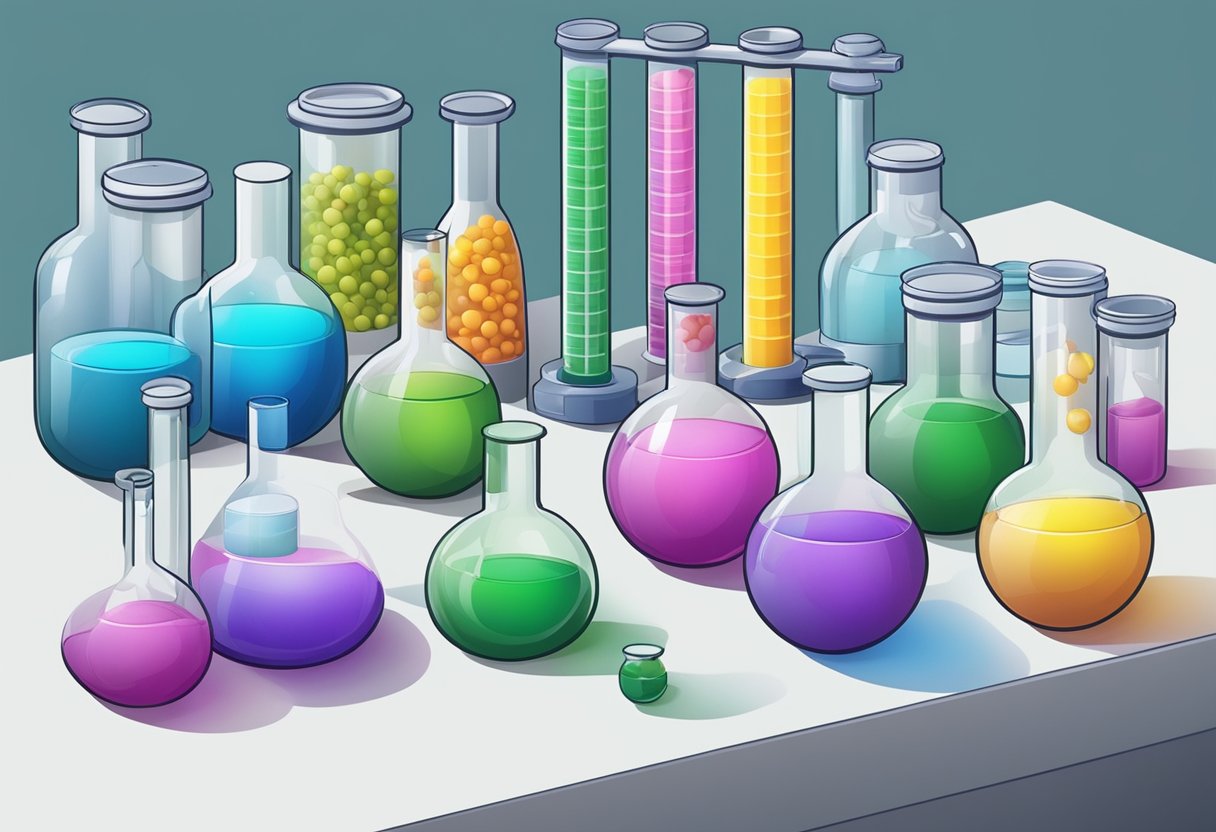Biopol Polymer: A Sustainable Alternative to Traditional Plastics
19/01/2024
Biopol is a type of biodegradable polymer that has been gaining attention in recent years due to its potential as a sustainable alternative to traditional plastics. Biopolymers are made from renewable resources such as corn starch, sugarcane, and cellulose, and are designed to break down naturally in the environment, reducing the amount of plastic waste that ends up in landfills and oceans.

One of the key benefits of biopolymers is their ability to biodegrade without leaving behind harmful microplastics, which can take hundreds of years to decompose and have been found in everything from drinking water to seafood. Biopolymers are also versatile and can be used in a wide range of applications, from packaging materials to 3D printing. While biopolymers are not without their challenges, including cost and limited availability, many companies and researchers are exploring ways to overcome these barriers and promote the adoption of biopolymers as a more sustainable option for the future.
Biopol Polymer Overview

Definition and Composition
Biopol polymer is a type of biodegradable polymer made from renewable resources such as corn starch, sugarcane, and potato starch. It is a thermoplastic material that can be molded into various shapes and forms. Biopol polymer is composed of long chains of repeating units called monomers, which are linked together through a process called polymerization.
Historical Development
The development of biopol polymer dates back to the 1970s when researchers began exploring alternative materials to traditional petroleum-based plastics. In the 1980s, a German company named Biotechnik developed a process for producing biopol polymer from potato starch. Since then, various companies have been working on improving the production process and expanding the range of raw materials that can be used to make biopol polymer.
Market Relevance
Biopol polymer is gaining popularity in the market due to its biodegradability and renewable nature. It is used in a variety of applications such as packaging, disposable cutlery, and agricultural films. Additionally, biopol polymer has potential applications in the medical industry, such as drug delivery systems and sutures. However, the market for biopol polymer is still relatively small compared to traditional plastics, and further research and development are needed to improve its properties and reduce production costs.
Overall, biopol polymer is a promising alternative to traditional plastics, offering a renewable and biodegradable solution to environmental concerns.
Types of Biopol Polymers

Biodegradable Polymers
Biodegradable polymers are those that can be broken down by natural processes, such as microbial degradation, into simpler compounds that are not harmful to the environment. Biopol is a type of biodegradable polymer that is gaining popularity due to its biocompatibility and biodegradability. It is made from renewable resources, such as starch, and is widely used in the production of biodegradable plastics.
Biopol is a versatile polymer that can be used to produce a wide range of products, including packaging materials, disposable cutlery, and even medical implants. Its biodegradability makes it an ideal choice for applications where environmental concerns are a priority.
Bio-Based Polymers
Bio-based polymers are those that are derived from renewable resources, such as corn, sugarcane, and other plants. Biopol is a bio-based polymer that is made from starch, which is extracted from corn or other crops. It is a sustainable alternative to traditional plastics, which are made from non-renewable resources, such as petroleum.
Bio-based polymers have a lower carbon footprint than traditional plastics, as they do not contribute to greenhouse gas emissions. They are also biodegradable, which means that they can be broken down by natural processes into simpler compounds that are not harmful to the environment.
In conclusion, Biopol is a type of biodegradable and bio-based polymer that is gaining popularity due to its sustainable and environmentally friendly properties. Its versatility makes it an ideal choice for a wide range of applications, from packaging materials to medical implants.
Production Processes
Fermentation
Biopol is a biodegradable polymer that is produced through a fermentation process. The process involves the use of microorganisms, such as bacteria, to convert organic materials into a polymer. The microorganisms are grown in a nutrient-rich environment, which allows them to produce the polymer.
During the fermentation process, the microorganisms consume the organic material and produce a polymer as a byproduct. The polymer is then harvested and purified to remove any impurities. The fermentation process is relatively simple and can be carried out in large-scale bioreactors.
Extraction
After the fermentation process, the polymer is extracted from the fermentation broth. The extraction process involves the use of solvents to separate the polymer from the other components in the broth. The extracted polymer is then purified to remove any remaining impurities.
The extraction process is critical to the production of high-quality biopol polymers. The choice of solvent and the extraction conditions can significantly affect the properties of the polymer. Therefore, it is essential to carefully optimize the extraction process to ensure that the polymer meets the desired specifications.
Synthesis
Once the polymer has been extracted and purified, it can be further modified to improve its properties. The synthesis process involves the use of chemical reactions to introduce new functional groups into the polymer.
The synthesis process can be used to adjust the properties of the polymer, such as its mechanical strength, thermal stability, and biodegradability. The choice of synthesis method and the reaction conditions can significantly affect the properties of the polymer.
Overall, the production of biopol polymer involves a combination of fermentation, extraction, and synthesis processes. These processes are critical to the production of high-quality biopol polymers that meet the desired specifications.
Properties and Characteristics
Biopol is a biodegradable polymer produced by the fermentation of corn starch. It is a thermoplastic polymer that has gained popularity due to its eco-friendliness and biodegradability. This section will discuss the mechanical properties, thermal stability, and biodegradability of Biopol.
Mechanical Properties
Biopol has good mechanical properties, including high tensile strength and good elongation at break. Its mechanical properties are comparable to those of traditional petroleum-based plastics. Biopol can be processed using conventional methods such as injection molding, extrusion, and blow molding.
Thermal Stability
Biopol has a lower melting point than traditional petroleum-based plastics, making it less suitable for high-temperature applications. However, it has good thermal stability at lower temperatures and can be used in a wide range of applications. Biopol can also be blended with other polymers to improve its thermal stability.
Biodegradability
Biopol is fully biodegradable and compostable. It can be broken down by microorganisms into carbon dioxide, water, and biomass. Biopol degrades in soil, water, and industrial composting facilities. Its biodegradability makes it an attractive alternative to traditional petroleum-based plastics, which can take hundreds of years to degrade.
In conclusion, Biopol is a biodegradable polymer with good mechanical properties, thermal stability, and biodegradability. Its eco-friendliness and biodegradability make it an attractive alternative to traditional petroleum-based plastics.
Applications of Biopol Polymers
Packaging Industry
Biopol polymers have numerous applications in the packaging industry. They can be used to create biodegradable packaging materials that are environmentally friendly. These materials can be used to package food, beverages, and other consumer goods. Biopol polymers can also be used to create biodegradable bags, which can be used for waste disposal and other purposes.
Medical Sector
Biopol polymers have potential applications in the medical sector. They can be used to create biodegradable medical implants, such as sutures and tissue scaffolds. Biopol polymers are also being investigated for use in drug delivery systems, as they can be designed to break down over time and release medication into the body.
Agricultural Uses
Biopol polymers have several potential applications in agriculture. They can be used to create biodegradable mulch films, which can be used to cover soil to promote plant growth and prevent weed growth. Biopol polymers can also be used to create biodegradable plant pots, which can be used to grow seedlings before transplanting them into the ground.
Overall, biopol polymers have a wide range of potential applications in various industries. Their biodegradability and versatility make them an attractive option for companies looking to reduce their environmental impact.
Environmental Impact
Life Cycle Assessment
Biopol polymer is a sustainable alternative to traditional petroleum-based plastics. It is made from renewable resources such as corn starch and sugarcane, which reduces the dependence on fossil fuels. Biopol polymer has a lower carbon footprint compared to traditional plastics, making it an environmentally friendly option.
A life cycle assessment (LCA) is a tool used to evaluate the environmental impact of a product throughout its life cycle. The LCA of Biopol polymer shows that it has a lower environmental impact compared to traditional plastics. This is because it requires less energy to produce and emits fewer greenhouse gases during its production.
Carbon Footprint
Biopol polymer has a lower carbon footprint compared to traditional plastics. Carbon footprint is the amount of greenhouse gases emitted during the production of a product. Biopol polymer emits fewer greenhouse gases during its production, making it a more sustainable option.
In addition, Biopol polymer is biodegradable, which means that it can be broken down by microorganisms in the environment. This reduces the amount of plastic waste that ends up in landfills and oceans.
Waste Management
Biopol polymer can be composted, which means that it can be broken down into organic matter that can be used as fertilizer. This is a sustainable way to manage waste and reduce the amount of plastic waste that ends up in landfills and oceans.
Biopol polymer can also be recycled, which reduces the need for new plastic production. However, it is important to note that Biopol polymer cannot be recycled with traditional plastics. It requires a separate recycling process, which may not be available in all areas.
Overall, Biopol polymer has a lower environmental impact compared to traditional plastics. It is made from renewable resources, has a lower carbon footprint, and can be composted or recycled. These properties make Biopol polymer a sustainable alternative to traditional plastics.
Regulatory Framework
International Standards
Biopol Polymer is a biodegradable polymer that is regulated by international standards to ensure its safety and environmental sustainability. The most important international standard for biodegradable polymers is ISO 14855, which specifies the test methods for determining the ultimate aerobic biodegradability and disintegration of plastic materials under controlled composting conditions. Biopol Polymer has been tested according to this standard and has been found to be fully biodegradable and compostable.
Another important international standard for biodegradable polymers is ASTM D6400, which specifies the requirements for compostable plastics. Biopol Polymer meets the requirements of this standard and is certified as compostable by various certification bodies.
Regional Regulations
In addition to international standards, Biopol Polymer is also regulated by regional regulations. In the European Union, Biopol Polymer is regulated by the European Bioplastics Association, which has established a certification scheme for biodegradable and compostable products. Biopol Polymer has been certified by this scheme and is allowed to carry the “OK Compost” logo.
In the United States, Biopol Polymer is regulated by the Federal Trade Commission (FTC), which has issued guidelines for the use of environmental marketing claims. Biopol Polymer can be marketed as biodegradable and compostable only if it meets the requirements of ASTM D6400 and has been certified by a recognized certification body.
Overall, Biopol Polymer is subject to stringent regulatory requirements to ensure its safety and environmental sustainability. These regulations help to ensure that Biopol Polymer is a viable alternative to traditional plastics and can contribute to a more sustainable future.
Innovation and Future Trends
Research and Development
Biopol polymer has been the subject of extensive research and development in recent years. Researchers are constantly exploring new ways to enhance the properties of biopolymers, such as their strength, flexibility, and durability. This has led to the development of new biopolymer blends that offer improved performance in a wide range of applications.
One area of active research is the development of biopolymers that can be used in high-performance applications, such as automotive and aerospace components. These applications require materials that can withstand extreme temperatures, pressure, and wear, and biopolymers are being developed that can meet these demanding requirements.
Emerging Technologies
The future of biopolymers looks bright, with many emerging technologies that are expected to revolutionize the industry. One of the most promising developments is the use of biopolymers in 3D printing. Biopolymers are ideal for 3D printing because they can be easily molded into complex shapes and structures, and they are biodegradable.
Another exciting area of development is the use of biopolymers in the medical field. Biopolymers are being used to create new medical devices and implants that are biocompatible and can be safely absorbed by the body. This has the potential to revolutionize the field of medicine, making it possible to create implants that can be customized to fit each patient’s unique anatomy.
Overall, the future of biopolymers looks bright, with many exciting developments on the horizon. As researchers continue to explore new ways to enhance the properties of biopolymers and develop new applications for them, we can expect to see biopolymers playing an increasingly important role in a wide range of industries.
Challenges and Limitations
Cost Factors
One of the challenges associated with the use of biopolymers is their cost. Biopolymers are generally more expensive than traditional petroleum-based polymers due to the higher cost of raw materials and manufacturing processes. In addition, the demand for biopolymers is still relatively low, which means that economies of scale have not yet been fully realized. This makes it difficult for biopolymer manufacturers to compete on price with traditional polymer manufacturers.
Performance Issues
Another challenge associated with biopolymers is their performance. Biopolymers are not as strong or durable as traditional petroleum-based polymers, which limits their use in certain applications. For example, biopolymers may not be suitable for use in high-stress applications such as automotive parts or structural components. In addition, biopolymers may be more prone to degradation over time, which can limit their lifespan.
To address these challenges, researchers and manufacturers are working to develop new biopolymers that are more cost-effective and have better performance characteristics. This includes exploring new raw materials, refining manufacturing processes, and developing new additives and blends. While there is still work to be done, the future looks promising for biopolymers as a sustainable alternative to traditional petroleum-based polymers.
Economic Considerations
Market Growth
Biopol polymer has seen steady growth in the market due to its biodegradable and renewable properties. The global biopolymers market is expected to reach $13.3 billion by 2024, with a compound annual growth rate of 16.8% from 2019 to 2024. The increasing demand for sustainable and eco-friendly packaging solutions, as well as the growing awareness of the adverse effects of conventional plastics on the environment, are driving this growth.
The packaging industry is the largest consumer of biopolymers, followed by the automotive and textile industries. The food and beverage industry is also a significant contributor to the biopolymers market, with increasing demand for biodegradable packaging materials for food products.
Investment Opportunities
Investing in biopolymers can be a profitable venture due to the increasing demand for sustainable and eco-friendly products. The production of biopolymers requires significant capital investment, but the returns can be substantial in the long run.
Investors can consider investing in companies that specialize in the production of biopolymers or companies that use biopolymers in their products. Additionally, there are opportunities for investment in research and development of new biopolymer materials and technologies.
It is important to note that the biopolymers market is still in its early stages, and there are uncertainties surrounding the commercial viability of biopolymers. However, with the increasing demand for sustainable and eco-friendly products, biopolymers are expected to play a significant role in the future of the plastics industry.




